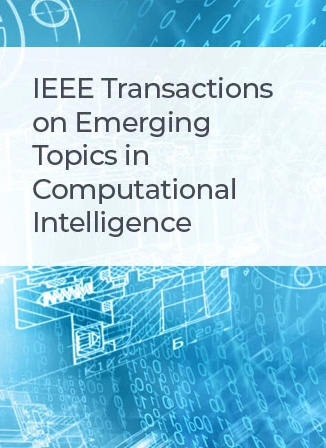A Novel Immune Algorithm for Multiparty Multiobjective Optimization
IF 5.3
3区 计算机科学
Q1 COMPUTER SCIENCE, ARTIFICIAL INTELLIGENCE
IEEE Transactions on Emerging Topics in Computational Intelligence
Pub Date : 2025-01-06
DOI:10.1109/TETCI.2024.3515013
引用次数: 0
Abstract
Traditional multiobjective optimization problems (MOPs) are insufficiently equipped for scenarios involving multiple decision makers (DMs), which are prevalent in many practical applications. These scenarios are categorized as multiparty multiobjective optimization problems (MPMOPs). For MPMOPs, the goal is to find a solution set that is as close to the Pareto front of each DM as much as possible. This poses challenges for evolutionary algorithms in terms of searching and selecting. To better solve MPMOPs, this paper proposes a novel approach called the multiparty immune algorithm (MPIA). The MPIA incorporates an inter-party guided crossover strategy based on the individual's non-dominated sorting ranks from different DM perspectives and an adaptive activation strategy based on the proposed multiparty cover metric (MCM). These strategies enable MPIA to activate suitable individuals for the next operations, maintain population diversity from different DM perspectives, and enhance the algorithm's search capability. To evaluate the performance of MPIA, we compare it with ordinary multiobjective evolutionary algorithms (MOEAs) and state-of-the-art multiparty multiobjective optimization evolutionary algorithms (MPMOEAs) by solving synthetic multiparty multiobjective problems and real-world biparty multiobjective unmanned aerial vehicle path planning (BPUAV-PP) problems involving multiple DMs. Experimental results demonstrate that MPIA outperforms other algorithms.一种新的多方多目标优化免疫算法
传统的多目标优化问题(MOPs)在实际应用中普遍存在于涉及多个决策者(dm)的场景中,但并不适用。这些场景被归类为多方多目标优化问题(MPMOPs)。对于MPMOPs,目标是找到尽可能接近每个DM的Pareto前沿的解决方案集。这对进化算法在搜索和选择方面提出了挑战。为了更好地解决MPMOPs问题,本文提出了一种新的多方免疫算法(MPIA)。MPIA包括基于个体在不同DM视角下的非支配排序等级的政党间引导交叉策略和基于提议的多方覆盖度量(MCM)的自适应激活策略。这些策略使MPIA能够为下一步操作激活合适的个体,从不同的DM角度保持种群多样性,并增强算法的搜索能力。为了评估MPIA的性能,我们通过解决涉及多个DMs的合成多方多目标问题和现实世界的多方多目标无人机路径规划(BPUAV-PP)问题,将其与普通多目标进化算法(moea)和最先进的多方多目标优化进化算法(mpmoea)进行了比较。实验结果表明,MPIA算法优于其他算法。
本文章由计算机程序翻译,如有差异,请以英文原文为准。
求助全文
约1分钟内获得全文
求助全文
来源期刊

IEEE Transactions on Emerging Topics in Computational Intelligence
Mathematics-Control and Optimization
CiteScore
10.30
自引率
7.50%
发文量
147
期刊介绍:
The IEEE Transactions on Emerging Topics in Computational Intelligence (TETCI) publishes original articles on emerging aspects of computational intelligence, including theory, applications, and surveys.
TETCI is an electronics only publication. TETCI publishes six issues per year.
Authors are encouraged to submit manuscripts in any emerging topic in computational intelligence, especially nature-inspired computing topics not covered by other IEEE Computational Intelligence Society journals. A few such illustrative examples are glial cell networks, computational neuroscience, Brain Computer Interface, ambient intelligence, non-fuzzy computing with words, artificial life, cultural learning, artificial endocrine networks, social reasoning, artificial hormone networks, computational intelligence for the IoT and Smart-X technologies.
 求助内容:
求助内容: 应助结果提醒方式:
应助结果提醒方式:


